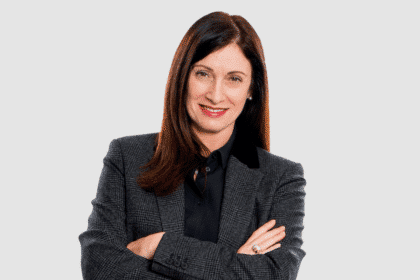In this guest piece, Broadsign ANZ sales director Ben Allman (pictured below) busts some of the myths and misconceptions around programmatic in digital out-of-home.
While still in its early stages in Australia, digital out-of-home (DOOH) is rapidly emerging as a viable and valuable programmatic channel.
To ensure we all make the most of this new opportunity and avoid the pains felt by our programmatic predecessors, education is vital.
Every link in the supply chain needs to understand how programmatic DOOH works, who is involved and the value they bring to the table. So while we have a job to do in educating the ecosystem on what programmatic DOOH is, it’s also essential to look at what it isn’t and get to work on dispelling the many misconceptions already surrounding the space.
- It ain’t online programmatic
While both mediums can now be transacted in a similar way, it’s important to remember that DOOH and Online are still two very different mediums, with different affordances. These differences need to be taken into account when planning, buying, optimising and evaluating any programmatic DOOH campaign. Beyond the fact that one exists in the physical world and the other in the digital world, there are numerous differences in the way both mediums fit into the media mix. OOH and DOOH have always been planned and bought in a somewhat siloed fashion and while programmatic technology opens up DOOH to more easily be bought alongside other media, we must remember that it performs a unique role and therefore should be treated that way.
- It ain’t a race to the bottom
Since its inception, Online programmatic has been labelled by many as a ‘race to the bottom’, with an endless long tail of sites vying for clicks and driving prices down. The fact DOOH exists in the physical world and is far less ubiquitous than Online in terms of inventory will go a long way to ensuring it doesn’t go for peanuts in the programmatic marketplace. Every impression is a premium impression to someone and as a supply-side platform (SSP), it is Broadsign’s job to find that someone. By bringing more potential bidders to the auction house, we’re increasing the demand for publisher’s inventory, producing greater yields. Better yet, publishers maintain full control over their pricing and whether they transact in a guaranteed or non-guaranteed fashion, in private marketplaces (PMPs) or on the open exchange is entirely up to them.
- It ain’t all about remnant inventory
Firstly, there’s no such thing as remnant inventory, just inventory that hasn’t been sold yet. When used properly, programmatic is an effective yield management tool, enabling publishers to extract more value from their assets. If a manufacturer of luxury German vehicles wants to target investment bankers in office elevators the day they receive their bonuses, then they should pay a premium for those impressions. Meanwhile, a lower price may be offered to a company selling toilet paper, who are less concerned with the who, when and where of the targeting and are simply looking for anyone with more than $2 who uses the bathroom from time-to-time.
The luxury vehicle manufacturer is after a very specific type of impression and wants to be certain they’ll get those impressions once they become available, whereas the toilet paper company is willing to forego certain impressions which may be of a higher value to other advertisers.
In this situation, the publisher could provide the first look in any relevant deal to the luxury car manufacturer, while the toilet paper company is there to take a last look at the deal should it still be available and hopefully wipe up (sorry, couldn’t help myself) any impressions which may have otherwise gone unsold. Programmatic DOOH can certainly be used to sell inventory which may otherwise have gone unsold, however it is just as often used (in some cases more frequently) to extract greater value from even the most premium of assets.
- It ain’t the death of sales teams
Connecting to programmatic pipes and watching money fall from the sky is one of the most common programmatic myths sold to publishers. We are often asked by publishers how much money there is to be made from programmatic and our response is always the same, “how good is your sales team?”.
Programmatic is simply a different way of transacting, not a different way of selling and still requires the backing of sales teams, particularly in these early stages. The publishers making the most of the programmatic opportunity are upskilling their existing sales teams and bringing in salespeople with valuable programmatic knowledge, relationships and experience. In some markets, we’ve even seen OOH publishers creating separate programmatic sales teams to sit alongside their direct sales teams.
- It ain’t perfect
Like anything, programmatic DOOH certainly isn’t perfect. As an industry we’ve made considerable advances in this space over a relatively short period of time, however the real work has only just started.
In addition to the need for greater education, there is work to be done in developing more reliable, robust and standardised audience measurement, among other things. If we can continue to recognise that programmatic DOOH isn’t a perfect solution and constantly keep pushing one another to adopt the best possible practices, then the future is extremely bright. As our GM of Programmatic Platforms, Adam Green likes to say: “we can’t give you 20-20 vision but we can give you better glasses”; and the prescription is only going to get better, year-after-year.









